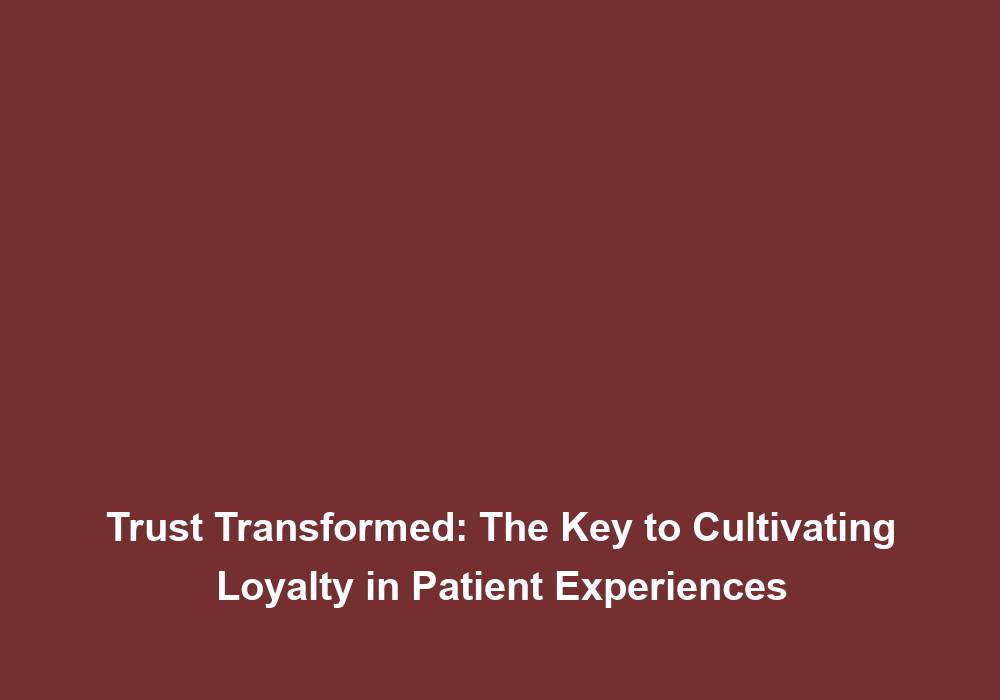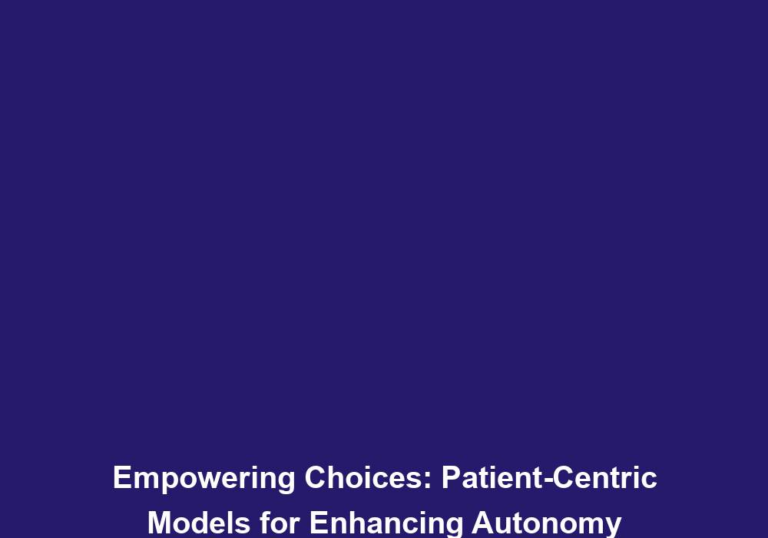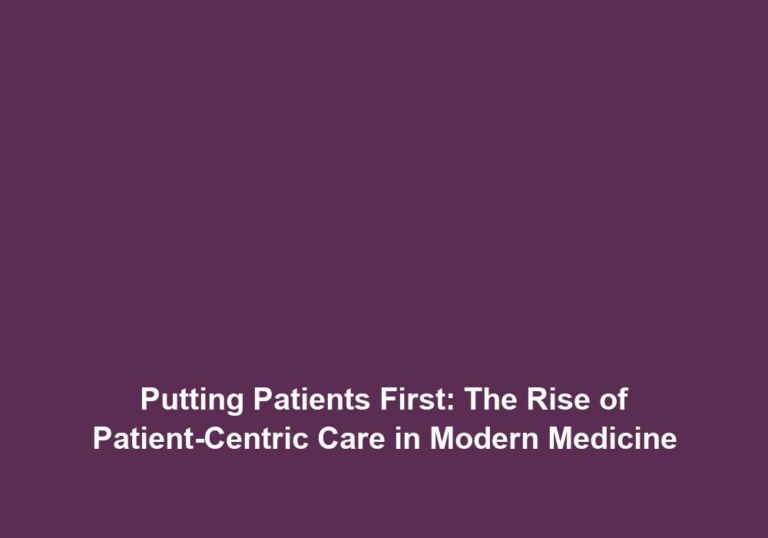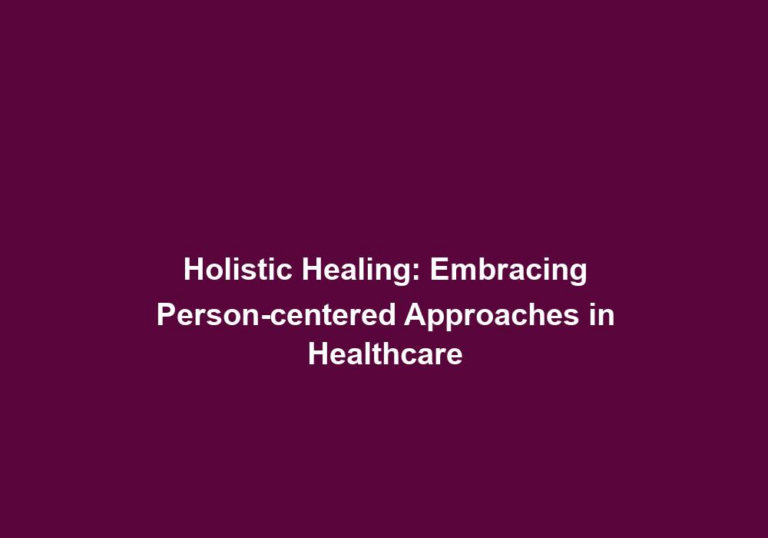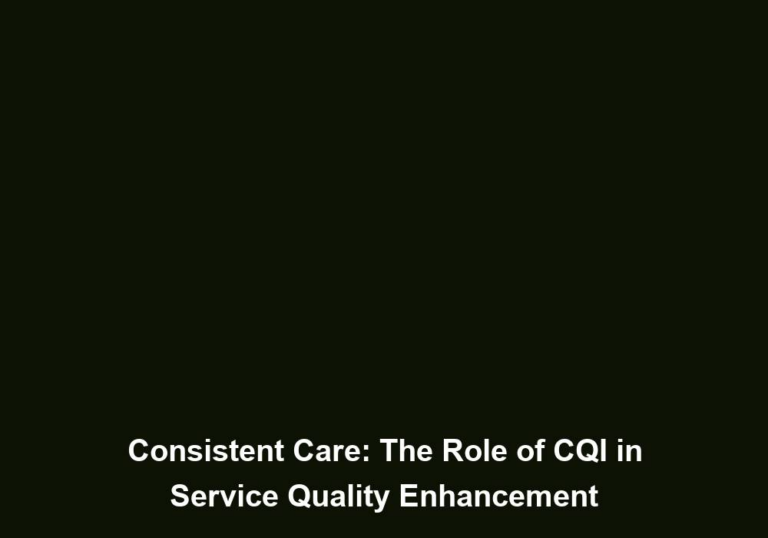Trust Transformed: The Key to Cultivating Loyalty in Patient Experiences
In today’s fast-paced healthcare industry, cultivating loyalty among patients is crucial for the success and growth of any healthcare organization. Patients have more options than ever before when it comes to choosing their healthcare providers, and building trust is a vital component in ensuring patients choose to stay with a particular healthcare provider long-term. This article delves into the significance of trust in patient experiences and explores various strategies to cultivate and transform trust into long-lasting loyalty.
The Importance of Trust in Patient Experiences
Trust forms the foundation of any successful relationship, and the patient-provider relationship is no exception. Patients place their health and well-being in the hands of healthcare professionals, making trust a fundamental element of the patient experience. When patients trust their healthcare provider, they are more likely to follow recommended treatments, engage in open communication, and feel satisfied with their overall experience.
Building Trust through Effective Communication
- Clear and Transparent Communication: Effective communication is key to building trust with patients. Healthcare providers must ensure that they communicate clearly, using language that patients can understand. Transparent communication about diagnoses, treatment options, risks, and benefits can help patients feel informed and involved in their healthcare decisions.
- Providing information in simple terms: Using medical jargon can be overwhelming for patients. Healthcare providers should break down complex medical terms and concepts, ensuring patients understand their condition and treatment options.
- Offering visual aids and written materials: Visual aids, such as diagrams or charts, can help patients better understand their condition. Providing written materials, such as brochures or pamphlets, can also serve as a reference for patients to review at home.
- Explaining the rationale behind recommendations: Patients are more likely to trust their healthcare provider when they understand the reasoning behind recommended treatments or procedures. Healthcare providers should take the time to explain the potential benefits and risks of different options.
- Active Listening: Listening attentively to patients’ concerns and questions is essential in building trust. Healthcare providers should actively listen to patients, showing empathy and respect for their perspectives. This fosters a sense of being heard and understood, strengthening the patient-provider relationship.
- Creating a safe and welcoming environment: Patients should feel comfortable expressing their concerns and asking questions. Healthcare providers can establish this environment by maintaining eye contact, using open body language, and actively engaging in the conversation.
- Paraphrasing and summarizing: Repeating or summarizing patients’ concerns or questions helps ensure that healthcare providers have understood their needs correctly. This practice demonstrates active listening and reassures patients that their input is valued.
- Validating emotions and experiences: Patients may have emotional reactions to their health conditions or medical procedures. Healthcare providers should acknowledge and validate these emotions, showing empathy and compassion.
- Timely and Responsive Communication: Prompt responses to patients’ inquiries or concerns contribute to building trust. Patients should feel that their healthcare provider values their time and is committed to providing timely and reliable information.
- Establishing clear communication channels: Healthcare providers should provide multiple channels for patients to reach out, such as phone, email, or secure messaging systems. Clear instructions on how to access these channels should be readily available.
- Setting realistic expectations: Healthcare providers should inform patients about the expected response time for different types of inquiries. Clear communication about response timeframes helps manage patient expectations and avoids unnecessary frustration.
- Providing updates and follow-ups: Regular communication and updates regarding test results, treatment progress, or any changes in the healthcare plan help patients feel involved and informed. Healthcare providers should proactively reach out to patients, even if there are no significant updates, to reinforce the sense of care and dedication.
Enhancing Trust through Patient-Centered Care
- Personalized Care: Tailoring treatments and care plans to meet each patient’s specific needs helps establish trust. Patients appreciate personalized care that recognizes their unique circumstances, preferences, and goals. This approach demonstrates a commitment to individualized attention and fosters a sense of trust in the provider.
- Conducting thorough assessments: Healthcare providers should gather comprehensive information about each patient’s medical history, lifestyle, and personal preferences. This information helps guide treatment decisions and ensures that the care plan aligns with the patient’s specific needs.
- Involving patients in care planning: Patients should be active participants in their own healthcare journey. Healthcare providers can engage patients by discussing treatment options, explaining the rationale behind recommendations, and considering their preferences and goals.
- Adapting care as needed: Patient needs may change over time. Healthcare providers should regularly reassess and adapt the care plan to accommodate any changes in the patient’s condition or circumstances. This demonstrates a commitment to ongoing personalized care.
- Shared Decision Making: Involving patients in their own care decisions empowers them and builds trust. Healthcare providers should present treatment options, explain risks and benefits, and collaborate with patients in making informed decisions. This shared decision-making process strengthens the patient’s trust in their provider’s expertise and dedication to their well-being.
- Educating patients about treatment options: Healthcare providers should provide detailed information about available treatment options, including potential outcomes and side effects. This empowers patients to make informed decisions and actively participate in their care.
- Considering patients’ values and preferences: Patients may have different priorities or concerns when it comes to their healthcare. Healthcare providers should take these factors into account and work collaboratively with patients to develop a care plan that aligns with their values and preferences.
- Respecting patient autonomy: Ultimately, the patient should have the final say in their care decisions, as long as they are well-informed. Healthcare providers should respect patient autonomy and support their choices, even if they differ from the provider’s initial recommendation.
- Continuity of Care: Consistency and continuity in healthcare services contribute to building trust and loyalty. Patients appreciate a seamless healthcare journey, where they can develop long-term relationships with their providers. Coordinating care across different specialties and ensuring smooth transitions between healthcare settings increases patients’ trust in their providers.
- Coordinating care among healthcare professionals: Healthcare providers should collaborate and share relevant information to ensure continuity of care. This includes sharing test results, treatment plans, and progress updates with other healthcare professionals involved in the patient’s care.
- Effective handoffs and transitions: When patients move between different healthcare settings or providers, clear communication and thorough handoffs are essential. Healthcare providers should ensure that important information is transferred accurately and that patients are well-informed about the next steps in their care.
- Establishing a primary care relationship: Having a primary care provider who oversees the patient’s overall healthcare and serves as a central point of contact enhances continuity of care. Patients who have a trusted primary care provider are more likely to stay engaged in their healthcare journey.
The Role of Technology in Trust Transformation
- Secure and Accessible Electronic Health Records: Utilizing technology to securely store and access patient health records enhances trust. Patients feel reassured when their healthcare provider employs modern and reliable electronic health record systems that ensure the privacy and confidentiality of their sensitive information.
- Implementing robust security measures: Healthcare providers should prioritize data security and privacy by implementing encryption, access controls, and regular audits of electronic health record systems. This ensures that patient information remains confidential and protected from unauthorized access.
- Providing patient access to records: Offering patients secure online portals or apps to access their health records allows them to review their medical information, track test results, and stay informed about their healthcare. This transparency builds trust and empowers patients to take an active role in managing their health.
- Convenient Online Appointment Scheduling and Communication: Offering online platforms for appointment scheduling, prescription refills, and secure messaging enhances patient convenience and trust. Such tools provide patients with easier access to their healthcare provider and facilitate timely communication, ultimately strengthening the patient-provider relationship.
- Streamlining appointment scheduling: Online platforms that allow patients to schedule appointments at their convenience reduce the need for phone calls and wait times. This convenience improves patient satisfaction and encourages regular engagement with the healthcare provider.
- Facilitating prescription refills: Online systems that enable patients to request prescription refills electronically save time and simplify the process. Patients can easily submit refill requests, and healthcare providers can respond promptly, ensuring continuity of care.
- Secure messaging for non-urgent inquiries: Online messaging platforms provide a convenient way for patients to communicate with their healthcare provider for non-urgent questions or concerns. Healthcare providers can respond at their convenience, fostering a sense of accessibility and responsiveness.
- Telehealth and Virtual Visits: The COVID-19 pandemic has accelerated the adoption of telehealth and virtual visits. These technologies have transformed the way healthcare is delivered, allowing patients to receive care remotely. Implementing and promoting telehealth services provide patients with flexibility, convenience, and improved access to care, thus fostering trust and loyalty.
- Expanding access to care: Telehealth eliminates geographical barriers, allowing patients to receive healthcare services regardless of their location. This expanded access to care ensures that patients can access necessary medical expertise without the need for travel or physical presence.
- Convenience and flexibility: Virtual visits enable patients to receive care from the comfort of their own homes, eliminating the need for in-person appointments. This convenience and flexibility improve patient satisfaction and engagement with healthcare services.
- Continuity of care during emergencies: During emergencies or crises, such as the COVID-19 pandemic, telehealth ensures that patients can continue to receive necessary care while minimizing the risk of exposure. This continuity of care builds trust and reassures patients that their healthcare needs are being addressed.
Cultivating Loyalty through Exceptional Patient Experiences
- Empathy and Compassion: Demonstrating empathy and compassion towards patients is crucial in cultivating loyalty. Healthcare providers should strive to understand the emotional and psychological aspects of their patients’ experiences and convey genuine care and concern.
- Active listening and validation: Healthcare providers should actively listen to patients’ concerns, validate their emotions, and respond with empathy. This creates a safe and supportive environment that fosters trust and loyalty.
- Addressing emotional needs: Patients may experience fear, anxiety, or stress related to their health condition. Healthcare providers should acknowledge and address these emotional needs, providing appropriate support and resources.
- Demonstrating genuine care: Simple gestures, such as remembering personal details about the patient or following up after a procedure, can show patients that they are valued and cared for. These acts of kindness contribute to building a strong patient-provider relationship.
- Patient Education and Empowerment: Educating patients about their conditions, treatments, and self-care empowers them to actively participate in their health journey. When patients feel knowledgeable and capable, they develop a stronger sense of trust and loyalty towards their healthcare providers.
- Providing clear and understandable information: Healthcare providers should explain medical concepts and procedures in a way that patients can easily understand. Visual aids, diagrams, or videos can be used to enhance patient comprehension.
- Encouraging questions and dialogue: Patients should feel comfortable asking questions and seeking clarification. Healthcare providers should actively encourage patient engagement and create a supportive environment for open dialogue.
- Offering resources for self-care: Providing patients with educational materials, online resources, or referrals to support groups empowers them to take an active role in managing their health. This sense of empowerment strengthens the patient-provider relationship.
- Continuous Improvement and Feedback: Seeking feedback from patients and actively incorporating it into practice demonstrates a commitment to continuous improvement. Patient satisfaction surveys, online reviews, and open channels of communication allow healthcare providers to address concerns, make necessary adjustments, and continually enhance the patient experience.
- Conducting patient satisfaction surveys: Regularly gathering feedback through surveys allows healthcare providers to assess patient satisfaction and identify areas for improvement. Feedback should be anonymous and confidential to encourage honest responses.
- Responding to feedback and concerns: Healthcare providers should promptly address patient concerns or complaints. This demonstrates a commitment to patient-centered care and reinforces the importance of patient feedback.
- Engaging in quality improvement initiatives: Healthcare providers should use patient feedback and data to drive quality improvement initiatives. This may involve revising protocols, enhancing communication processes, or implementing new technologies to enhance the patient experience.
In conclusion, trust is the cornerstone of cultivating loyalty in patient experiences. Effective communication, patient-centered care, technological advancements, and exceptional patient experiences all contribute to building and transforming trust into long-lasting loyalty. By prioritizing trust, healthcare providers can foster strong and meaningful relationships with their patients, leading to improved outcomes and a thriving healthcare organization.

